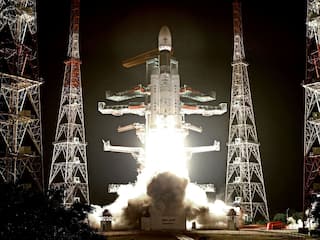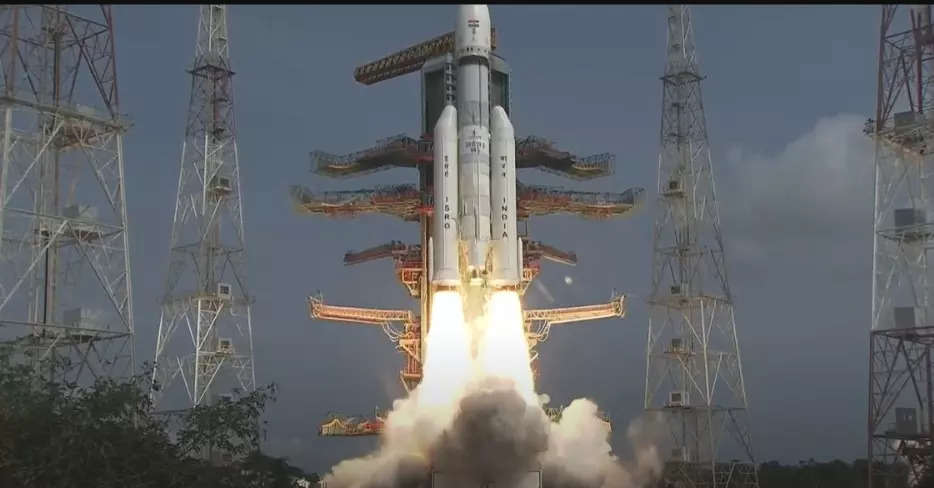On December 5, 2023, the Indian Space Research Organisation (ISRO) successfully launched the LVM3-M2/OneWeb India-1 mission, marking yet another milestone in India’s growing space capabilities. This mission, which is part of the OneWeb satellite constellation, plays a key role in advancing India’s position in global space exploration. In this blog post, we will delve into the details of the mission, the significance of the OneWeb constellation, and what this achievement means for the future of space exploration in India.
What is the LVM3-M2/OneWeb India-1 Mission?
The LVM3-M2/OneWeb India-1 mission, launched from the Satish Dhawan Space Centre on December 5, is a part of ISRO’s ongoing collaboration with OneWeb, a UK-based global satellite communications company. The mission’s primary objective was to place 36 OneWeb satellites into Low Earth Orbit (LEO). These satellites are designed to provide internet services to remote regions around the world, making the internet more accessible to underserved areas.
The launch vehicle used for this mission is the GSLV Mk III (Geosynchronous Satellite Launch Vehicle Mark III), also known as LVM3, which is one of ISRO’s most powerful rockets. The LVM3-M2 configuration signifies the rocket’s second mission for OneWeb, and it is an important step forward in realizing India’s ambitious goals for space technology and global satellite-based communication.
The Role of OneWeb
OneWeb, a global communications company, has a vision of connecting the unconnected, especially in remote and rural areas where terrestrial internet infrastructure is not feasible. The OneWeb constellation, which is planned to eventually include hundreds of satellites, aims to provide high-speed broadband services to underserved communities, ships, planes, and other remote locations. This satellite-based service will be a game-changer for many countries that lack reliable internet connectivity.
India’s involvement in this project is crucial, both from a commercial and strategic standpoint. The successful launch of the LVM3-M2/OneWeb India-1 mission showcases India’s growing space sector, and highlights ISRO’s capability in executing complex missions that have far-reaching global implications.
The Significance of the Launch
This mission has several important implications for both India and the global space industry. Firstly, it solidifies ISRO’s status as a leading player in the space industry, not only in terms of launching national satellites but also in providing commercial satellite launch services to international clients. ISRO’s growing partnership with companies like OneWeb is a testament to the increasing global demand for affordable and reliable satellite launches.
Secondly, the success of this mission is a significant boost to India’s space technology development. It demonstrates that India is not just a passive player in the space race but an active contributor to global technological innovation. The LVM3-M2 rocket used in the mission is designed to carry heavier payloads and has successfully launched other high-profile missions, including the Chandrayaan-2 and Gaganyaan missions. The continued success of the GSLV Mk III further strengthens ISRO’s reputation as a reliable partner for space missions.
Another key point is the role this launch plays in India’s broader space policy goals. India has long aspired to increase its space infrastructure, particularly in satellite communications and remote sensing. The success of the OneWeb India-1 mission reflects ISRO’s growing capabilities and sets the stage for future missions that will continue to push the boundaries of space exploration.
The Path Forward: India’s Space Ambitions

The LVM3-M2/OneWeb India-1 mission is part of a larger vision for India’s space program. ISRO has been working on a number of ambitious projects that aim to establish India as a leader in space exploration. One of the primary goals is the Gaganyaan mission, which is India’s first crewed space mission. The launch of Gaganyaan, expected in the coming years, will be a historic moment for India as it seeks to join the ranks of countries capable of sending humans to space.
Another significant part of ISRO’s agenda is its continued work on satellite constellations. India’s own communication satellites, such as GSAT and INSAT, have been providing crucial services for telecommunications, weather forecasting, and disaster management. The success of the OneWeb India-1 mission strengthens India’s position as a key player in satellite-based communications and space infrastructure.
Moreover, ISRO has been exploring interplanetary missions, including the potential for Mars exploration. Following the success of the Mars Orbiter Mission (Mangalyaan), India is poised to launch even more ambitious missions to explore deeper into the solar system. The expertise gained from missions like LVM3-M2/OneWeb India-1 will contribute to the technical advancements needed for these future endeavors.
Strategic Importance
The success of this mission also holds strategic importance. By launching satellites for global companies like OneWeb, India is cementing its position as a trusted partner for space missions. This can have broader implications for India’s foreign relations, especially in the context of collaborations with countries like the United States, Russia, Japan, and European nations.
The ability to launch high-capacity satellites and participate in global communication projects like OneWeb enhances India’s soft power. It showcases the country’s technological prowess and fosters stronger diplomatic ties in the global space community. As global demand for satellite communication services grows, ISRO’s role in meeting this demand positions India as a key player in the space economy.
Conclusion
The LVM3-M2/OneWeb India-1 mission represents a significant leap forward for India in the field of space exploration and satellite communications. It is a testament to the growing capabilities of ISRO and India’s commitment to pushing the boundaries of space technology. As India continues to build on the success of this mission, the future of space exploration looks promising. With more ambitious projects on the horizon, India is set to play an increasingly important role in shaping the future of global space exploration.


